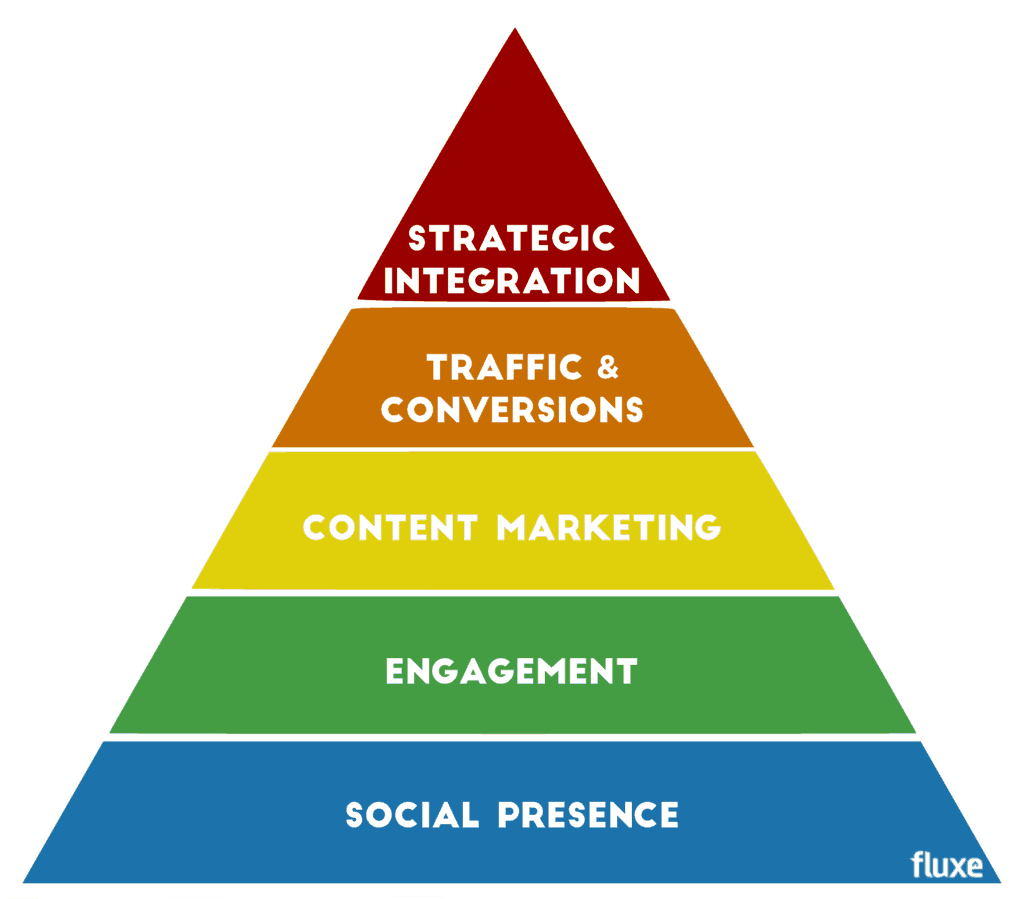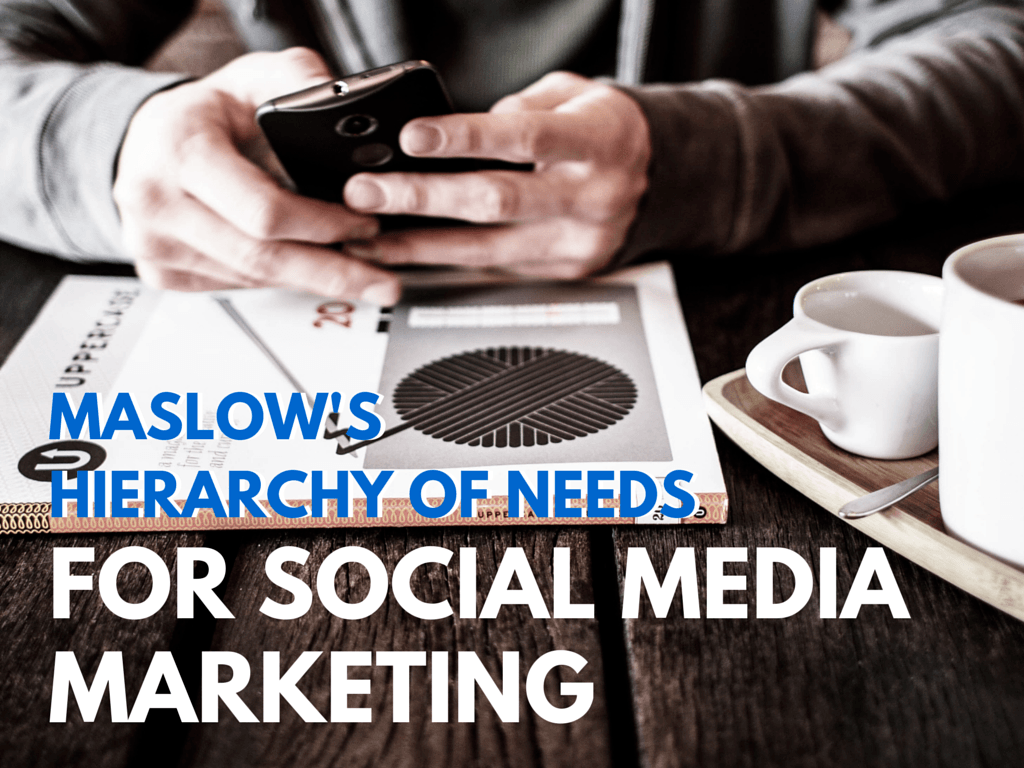By now you’ve probably decided if your company is going to use social media channels like Facebook or LinkedIn in your marketing. But have you thought about exactly why you are putting the time, money and resources into creating content for those channels? And what exactly do you want to get out of them?
The common misconception is that the most important thing to do is create content for social media. Not true! The most important part of using social media for your business is starting with a strategy that drives the content.
Most companies go through these five phases of “social media realization”. Take a look at each one and see where your company falls, then figure out what you need to do to make it to the next stage of your social media strategy.

Social Presence
As companies realize they are being left behind in the age of digital marketing, they find themselves in this phase. Scrambling to get on social media, they set up a Facebook, Twitter and LinkedIn account. That’s the first step, but you can’t stop there! In this stage you must also have a website that can support a blog and constantly updated content as well as a team to update it. The Social Presence stage is also where you must choose which social channels you want to use.
Engagement
Companies in the engagement stage find that being on social media is not enough. What they really want is for people to interact and engage with them, so the goal becomes getting likes and comments on Facebook, and replies and retweets on Twitter. There is absolutely nothing wrong with engagement, but engagement alone is too vague to be an end goal. There must be something beyond engagement that clarifies your purpose for these social channels.
Content Marketing
The majority of your success hinges on this stage. Engagement builds trust with your audience and consistent content on social channels shows that you care, but from where is that content coming? Posting on social media is great, but it’s only the beginning of the relationship. You must build deeper trust with content marketing by using resources like blog posts, emails and e-books. Your content marketing strategy is the bridge between social and paid media and website conversions.
Traffic & Conversions
The next logical stage is to drive traffic to your website from your social media community, allowing you to increase visitors to your website. This may work as your main goal for a while, but most businesses discover that website traffic is useless without a goal for their visitors.
When increasing traffic isn’t enough, the next step is converting that traffic. In other words, having visitors perform a specific action such as downloading your e-book in exchange for an email address, buying a product, or scheduling an appointment.
Interestingly, most brands skip to this step immediately when setting up their social media accounts. They go from zero to “Let’s post my products or services on social media and get sales!”, then they are severely disappointed when nothing happens. What many businesses don’t realize is you need the previous steps of engagement and steady traffic before you can earn the trust of your audience to convert.
Strategic Integration
The last stage is realizing that your social media, along with the rest of your marketing and advertising, need to be integrated to create a successful lead generation strategy. Your strategy and the tools you use also needs to be communicated and utilized throughout your organization with content marketing.
So how do you navigate successfully through this hierarchy? The only way is to start with a clear digital marketing strategy that encompasses social media and content marketing and integrates it with the rest of your marketing and your entire team.



